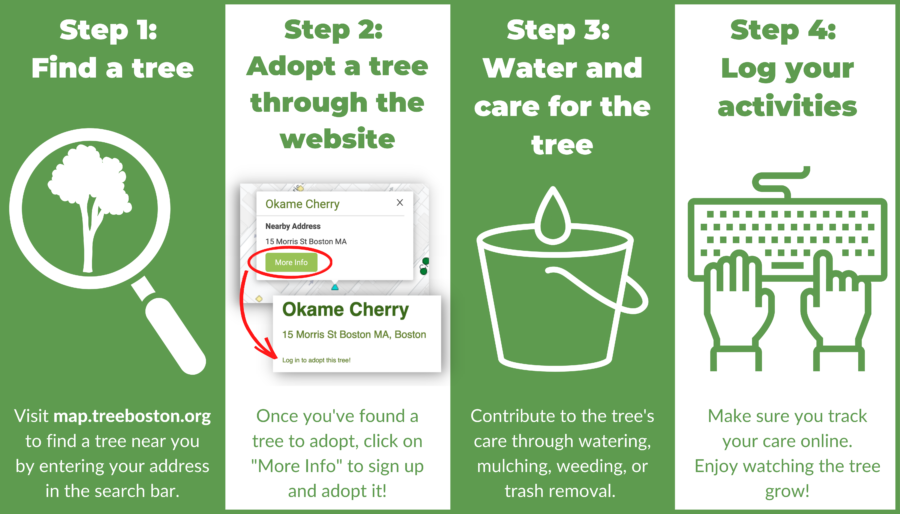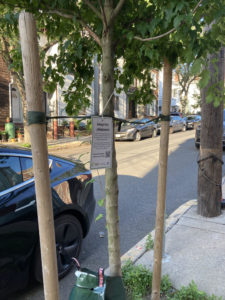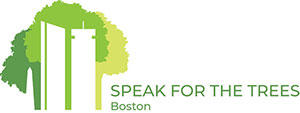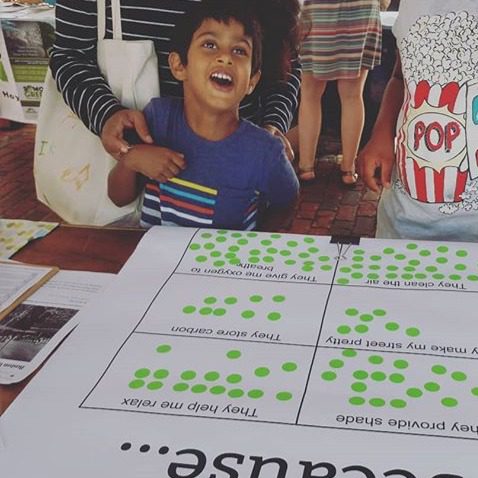Adopt-A-Tree…
& Help Boston’s Forest Grow

Why it started:
At Speak for the Trees, we love seeing new street trees being planted in Boston and want to make the most of their benefits by helping them reach their mature stage. Newly planted street trees are more vulnerable, so ensuring their survival depends on them receiving the appropriate amount of water. Starting in late spring to the end of the summer, these trees require 15 to 20 gallons of water weekly. Rainfall alone does not provide these trees with enough water necessary to survive, which is why we need your help.
How it works:
 The Adopt-A-Tree program was created to care for these newly planted street trees in Boston. It prioritizes trees that were planted fewer than three years ago, as they require more care than a mature tree and are more likely to die if not cared for. You can help us make sure they survive by contributing to their watering. Click the link below or go to map.treeboston.org to find your local newly planted street trees and sign up to care for them. This program is currently only in East Boston and Ellis neighborhood for new street trees, however, all residents of Boston can adopt an older tree to care for, and we hope to increase the number of neighborhoods participating. Through the website, you can log the maintenance you perform, so we can make sure all the trees get the care they need. This is a great family or small group activity, so get your kids, parents, grandparents, cousins, friends, and neighbors to help water and care for your local street trees!
The Adopt-A-Tree program was created to care for these newly planted street trees in Boston. It prioritizes trees that were planted fewer than three years ago, as they require more care than a mature tree and are more likely to die if not cared for. You can help us make sure they survive by contributing to their watering. Click the link below or go to map.treeboston.org to find your local newly planted street trees and sign up to care for them. This program is currently only in East Boston and Ellis neighborhood for new street trees, however, all residents of Boston can adopt an older tree to care for, and we hope to increase the number of neighborhoods participating. Through the website, you can log the maintenance you perform, so we can make sure all the trees get the care they need. This is a great family or small group activity, so get your kids, parents, grandparents, cousins, friends, and neighbors to help water and care for your local street trees!
Why it matters:
We hope this program will build a sense of stewardship and connection between residents and trees. Trees provide a range of benefits, such as filtering out carbon pollutants in the air and protecting neighborhoods from flooding and increasing urban heat island effects. Caring for trees today can make future generations more resilient to climate change impacts. Being around trees can also improve mental health and reduce risks of asthma. With your help, we can improve the size and health of our urban tree canopy.
Caring for your tree:
For new trees, proper watering is critical for at least the first three years after being planted. Even heavy rains don’t necessarily penetrate far enough into soil to sufficiently water a new tree. Our goal is for each new tree to receive 15 to 20 gallons of water per week from May through the end of September. The Ellis South End Neighborhood Association created a comprehensive tree care guide to help you support your adopted trees:
Tree Watering Guide
When and how much water:
- Water before 10 a.m. and after 8 p.m. to reduce the amount of water lost to evaporation.
- For new trees three years old or less, give a minimum of 15 gallons of water per week per tree. During periods of drought or dry spells, be generous.
How to water:
Gator bags:
- Many younger trees are equipped with green plastic bags that release water slowly to the tree’s roots. These bags usually hold around 20 gallons of water, so they would only need to be filled once per week. Bags are sometimes attached to the post that the tree is tied to for support rather than the tree itself. This is not a mistake! Installing on the base of the tree may cause crown rot in some species. Do not move the bag from its original location.
- To fill the bag, insert a hose or water container into the slot at the top of the bag between the two layers of plastic. You should not see the water immediately flow from the bag into the tree pit because the bag is designed for slow release. If the water is still in the bag after a few days, the holes at the bottom are most likely clogged with dirt and should be cleared. View an instructional video below:
Five-gallon bucket adjusted for slow water release:
- Drill 4-5 holes the diameter of a pencil on the bottom.
- Fill the bucket with water and place it at the base of the tree.
- Fill it up again four or five times, to equal the full 15-20 gallons needed, moving the bucket location slightly each time to distribute the water more evenly around the tree’s root zone.
Hose:
- Place the hose a foot or so from the base of the tree and turn it on to a trickle.
- Let it run for 1-2 hours, moving it occasionally to provide water to the tree’s entire root zone.
Tree Mulching Guide:
Mulch also helps a young tree because it helps to retain water in the soil. It’s even more helpful if the mulch is mixed with compost to provide added nutrition. If possible, add mulch to your adopted tree’s pit as follows.
- Lay down a mulch ring around the tree following the 3-3-3 rule (3 inches deep in a 3-foot radius around the tree, while leaving a 3-inch circle closest to the trunk with no mulch).
Additional care:
Further, we encourage you to remove weeds that grow in the soil where your adopted tree is planted, if applicable. Safely removing trash and debris near the tree is also important. Young trees are vulnerable to other hazards of city life, such as road salt, animal urine, soil contamination, human abuse and weather damage. Don’t forget to log the care!

